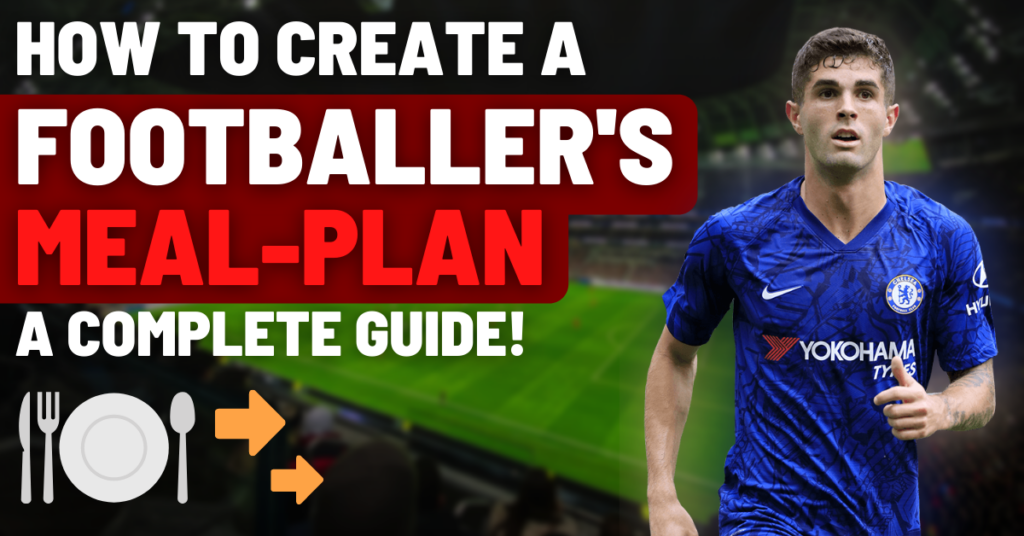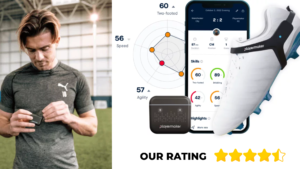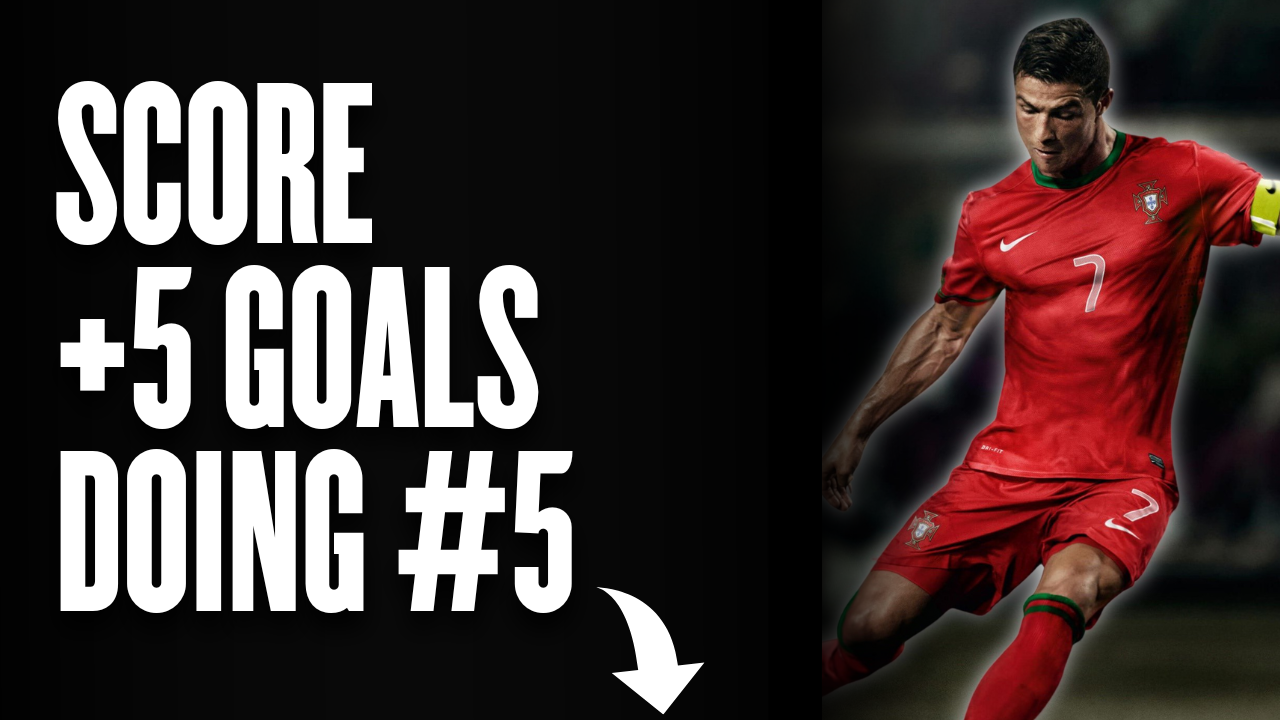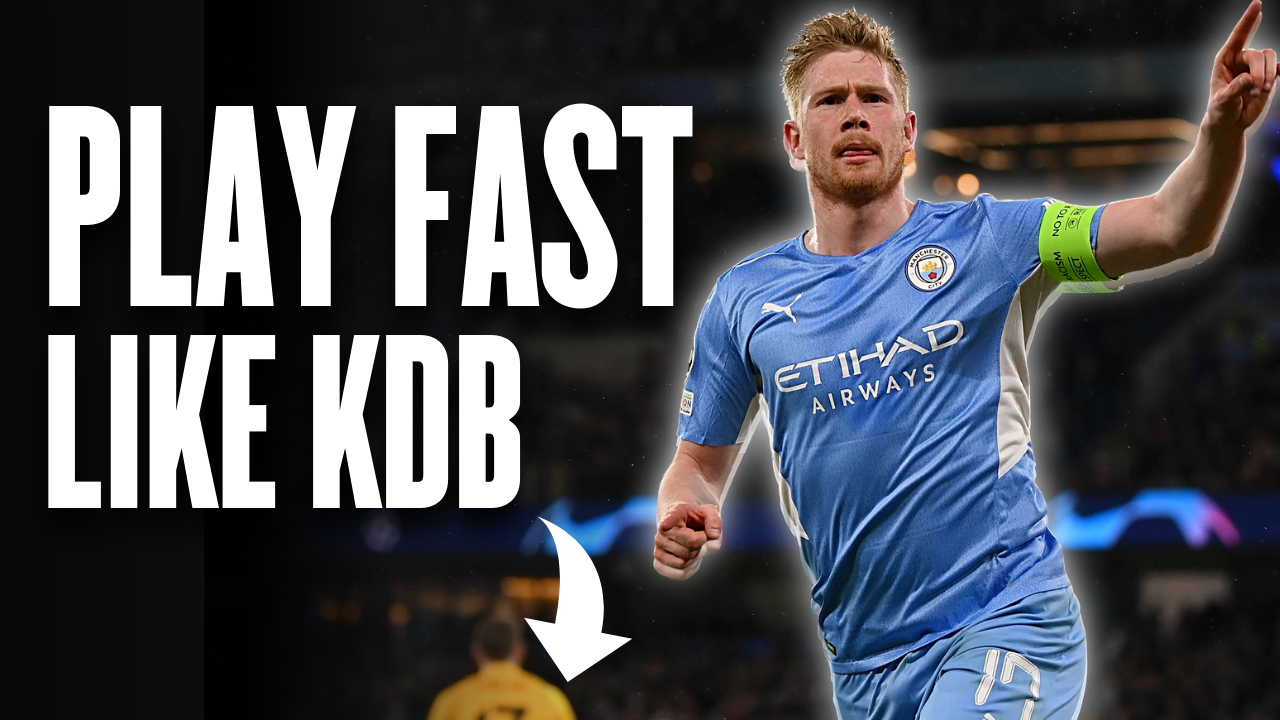
A question I often get asked on our Instagram is how a footballer’s diet should look like on a daily basis. Of course, there is no “one-size-fits-all” answer to this question. However, by following a few simple nutrition protocols any footballer can maximize his performance and recovery through nutrition. In addition, I have to say that fad diets are usually not very successful when it comes to high-performance athletes.
In this article, we will first analyze the basic aspects of a footballer’s meal-plan and then we will suggest a variety of foods that you can include in your diet. Finally, you will find a sample footballer’s meal-plan with a variety of options that you can choose from and modify to your own needs (portions, foods, etc.)
CALORIES AND NUTRIENTS
Every day, your body burns a specific amount of calories which depend on a) your BMR (Basal Metabolic Rate) and b) your activity level. A general rule is that if you want to lose fat you will have to stay below this number (calorie deficit), whereas if you want to put more muscle mass you will have to stay above it (calorie surplus). So depending on the calories you burn and the goals you have you’ll need to adjust your daily caloric intake.
Click here to see how you can lose fat as a footballer (the right way!)
We can divide nutrients into two broad categories: macronutrients (proteins, carbohydrates, fats) and micronutrients (vitamins and minerals). There are three macronutrients: protein, carbohydrates, and fats. The reason I avoid and am against fad diets that restrict and exclude certain nutrients (i.e. ketogenic diet – significantly reduces carbohydrate intake) is because all nutrients are essential when it comes to high-performance sports.
Macronutrient Intake Goals
Having said that, what should be each macronutrient’s intake? As a rule of thumb, it would be good for a footballer’s meal-plan to consist of 40-60% of carbohydrates, 20-30% of proteins, and 10-20% of healthy Ω-3 fatty acids. These numbers can be altered depending on the training load of the day.
Despite all of this, many of you still get confused. Don’t overthink it. If you want to achieve these numbers through your diet then every meal should consist of those numbers. For example, if your goal is for your nutrition to consist of 50% C, 30% P, and 20% F, then try to stack half of your plate with a source of carbohydrates, 30% of it with a lean protein source, and leave the other 20% for vegetables and/or a healthy fat source.
We take the big picture and make it smaller. Again, do NOT overthink it.
Finally, as for the micronutrients, i.e. vitamins and minerals, you will find them in fruits and vegetables. Be sure to include large amounts of them in your daily nutrition. Also, do not even dare to tell me that fruit is high in “sugar”. First, they do not contain processed sugar, they contain a simple (monosaccharide) carbohydrate called fructose. Second, their nutritional value in terms of vitamins and minerals is impressive. Keep a good balance between fruits and vegetables and consult the color-palette to ensure variety.
THE FOODS

In this part of the article, we will classify different foods that fit perfectly into a footballer’s diet. We divided those foods into three categories, in regards to their primary macronutrient.
Protein Rich Foods
- Lean Chicken
- Turkey
- Lean Beef
- Lean Pork
- Eggs and Egg whites
- Fish (Salmon, Tuna etc.)
- Lentils
- Beans
- Chickpeas
- Peas
- Tofu
- Quinoa
- Humus
- Cottage Cheese
- Fat-Free Milk
- Fat-Free Greek Yogurt
- Protein Supplement
Many protein sources also have a high content of unhealthy fats e.g. pork fat. Make sure that you either remove these fats or to choose the fat-free options.
Carbohydrate Rich Foods (Simple and Complex)
Simple carbohydrates have a bad reputation in the sports and health industry and have been heavily linked to processed sugar. However, they are such an important macronutrient in a footballer’s diet. Click here to find out why. Now, let’s take look at some foods rich in simple and complex carbohydrates.

*As an affiliate, I'm earning from qualifying purchases without any extra charges being placed on you.
Simple Carbohydrates
- White Rice
- Pasta
- Potatoes
- White bread
- Tortillas
- Fruit
- Processed Sugar
- Organic Honey
- Black Chocolate
- Fruit Juice
- Fat-Free Milk
- Chocolate Milk (Click here for recovery properties)
- Carb-Gels
Complex Carbohydrates
- Brown Rice
- Brown Pasta
- Sweet Potatoes
- Whole Wheat Bread
- Whole Wheat Tortillas
- Oats
- Quinoa
- Fruits
- Peas
Healthy, Ω-3 Fats
- Avocados
- Olive/Vegetable Oil
- Fatty Fish (i.e. Salmon, Sardines, Anchovies etc.)
- Walnuts
- Almonds
- Chia Seeds
- Flax Seeds
- Fish/Cod Liver Oil Supplement
HOW TO CREATE A FOOTBALLER’S DIET PLAN
- Set your calorie and macronutrient intake goal for the day/week/month.
- Create at least two options for each meal/snack (breakfast, lunch, dinner, snacks) that meet your needs and preferences.
- Select portions that fit your caloric and macronutrient goal of the day
- Execute.
SAMPLE FOOTBALLER’S DIET-PLAN (2+ OPTIONS PER MEAL)
Breakfast
Option # 1 – Greek Yoghurt Bowl
- 220gr of Greek Yoghurt (Fat-Free)
- A Handful of Mixed Berries
- 1 Medium Banana or 50gr of Oats
- 1-2 tsp. of Chia Seeds
- Cinammon
Option # 2 – Scrambled Eggs on Toast
- 3 Medium Eggs (Use Egg-Whites for a Low-Calorie Breakfast)
- 1 Slice of Whole Wheat Bread
- Fruit of Choice (Small Bowl)
Lunch
Option # 1 – Sweet Potatoes and Chichen Breast
- 1 Big Sweet Potato/2-3 Medium Potatoes
- 200gr of Chicken Breast
- Medium Sized Salad with Vegetables of Choice
*Cook with Olive/Vegetable Oil
Option # 2 – Rice and Salmon
- 2 Cups of White/Brown Rice (or Mixed)
- Salmon Fillet (1 Piece)
- Medium Sized Salad with Vegetables of Choice
*Cook with Olive/Vegetable Oil
Dinner
Option # 1 – Omelette and Sweet Potatoes
- 3 Medium Eggs (Omelette)
- A Handful of Spinach
- 1 Big Sweet Potato/2-3 Medium Potatoes
- Small Salad/Bowl of Fruit
Option # 2 – Vegetable Soup with Beef
- 150gr of Lean Beef
- 100-200ml Vegetable Soup
- 1 Slice of Whole Wheat Bread
Snacks
- Natural Protein/Energy Bars
- Dried Fruit (Simple Carbs)
- Nuts & Seeds (Healthy Fats)
- Smoothies
- Sandwiches
- Fruit
- Salads
THE TAKEAWAY
Building a footballer’s diet plan that meets the needs and desires of the player is a relatively easy task (over time) that heavily includes trial and error. However, through this process, you will discover yourself and gain self-awareness. In time, you will be able to reach a level where you’ll no longer need to monitor your calorie and macronutrient intake. In other words, you will perfectly combine self-awareness and knowledge and you will adjust your nutrition appropriately. Finally, NEVER be afraid to ask for help from a specialist e.g. high-performance nutritionist. Whatever question you have, be sure to send it to me via Instagram and I will do my best to answer them as soon as possible!
Thank you once again for reading our articles. If you liked it, make sure to SHARE it with some of your teammates and coaches. It would mean the world to us! Until the next article, check us out on Instagram for some daily content and SUBSCRIBE to our newsletter.

*As an affiliate, I'm earning from qualifying purchases without any extra charges being placed on you.




